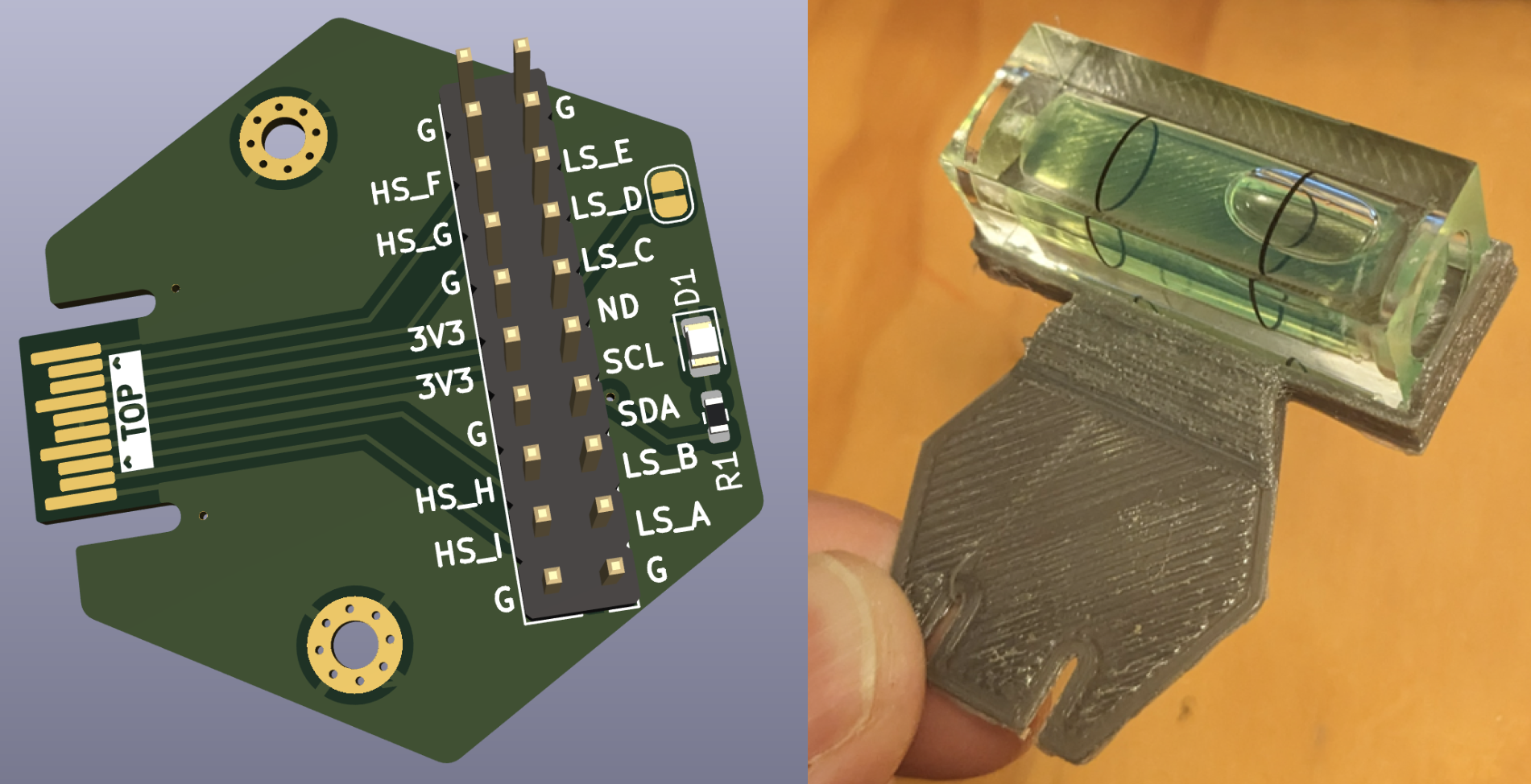Tildagon: The EMF 2024+ badge
Every EMF has featured a unique electronic badge, but from 2024 we’re taking a different approach.
Badges are a wonderful way to encourage experimentation and collaboration, but often end up forgotten in a drawer after the festival has finished. We want this to change, and we want you to bring your badge back to the next EMF.
Introducing the Tildagon: A reusable badge with modular components upgraded at each event, and hexpansion slots to fill with your own creations.

The Tildagon is hexagon shaped with a slot on each side to plug a “hexpansion” into. Hexpansions are 1mm thick objects with a particular shape on one edge - it can be a circuit board to add new features, or it can be made of cardboard (so you can quickly add cat ears).
For the first time we are charging a small amount for the badge in advance - it does not cover the full cost of production, but it means we only produce badges for those who want them and rely on sponsorship less.
The badge will be reusable for multiple events with only a small part of the badge being replaced each year - if you bring your badge back to EMF 2026 you will not need to pay for the upgrade modules.
The Tildagon costs £13 with a battery. We intentionally designed the badge to be compatible with the EMF 2016 and 2018 badge batteries, so you can also order one without a battery for £10 - we encourage you to do this if you can.
If you have a ticket to EMF 2024 you will be able to order your badge on the website shortly.
Hexpansions

Hexpansions are things that plug into the badge’s expansion connectors. Almost anything can be a hexpansion - the simplest hexpansion is a just piece of 1 mm card cut into the right shape.
Your Tildagon badge will be supplied with some hexpansions, and we will issue new hexpansions at each event. We hope that you’ll create some to give away too!
Hexpansion connectors provide:
- Up to 600mA of 3.3V power (current-limited)
- An I2C bus (separate for each hexpansion)
- 4 high-speed GPIO pins connected directly to the ESP32-S3
- 5 lower-speed GPIO pins connected to a GPIO expander/LED driver
- 1 hexpansion detection pin (also used to switch power to the hexpansion on/off if needed)
A hexpansion can optionally provide an I2C EEPROM from the list of approved devices. If an EEPROM is present, the badge will be able to read a hexpansion identifier and name. You can also store code on the EEPROM, which will be run on the badge.
The hexpansion technical documentation, pinout, and PCB templates are available in this repository: emfcamp/badge-2024-hardware.
We will soon have paper templates as well! ✂️
Make a thing
Unlike previous years we’re publishing information well ahead of the festival so that you can build applications and hardware hexpansions before we get to the field. You can expect things built for this year’s badge to work at future events too!
We’re opening our work-in-progress repositories today, and everything except the final artwork will be public before the event. We’re also providing templates for people to make their own hexpansions.
- Hardware - emfcamp/badge-2024-hardware
- Software - emfcamp/badge-2024-software
- Documentation - tildagon.badge.emfcamp.org
- Badge Chat - Matrix: #emfcamp-badge:matrix.org, or IRC: #emfcamp-badge on Libera.chat
Why are we doing this?
We’re tired of building similar things over and over just to make it new and unique. We’re tired of putting ever-increasing stacks of e-waste into the drawers of the hacking world. We’re especially tired of people not being able to meaningfully build things for the badge before the event, and none of those things working by the next event.
Instead of redesigning the badge from scratch every two years, we’re building a reusable platform with an interchangable part specific to the event, and a base part which will remain compatible for multiple years. This not only lets us waste less effort and fewer materials, but also provide all attendees with a stable base to build on.
We want to let you easily make physical things that interact with the badge, in the knowledge that those things are going to continue working with future badges. In previous years, expandability has always been an afterthought - people still managed to do amazing things, but it was always a challenge.
We put all the expensive and hard-to-get-right functionality on the base part, using better components than usual to ensure they last. This means we don’t have to remake things that tend to stay the same, or rewrite software and drivers for every event.
At future events we will reuse the base part and maintain compatibility for existing hexpansions. The most energy-intensive part of each badge is the battery, so we intentionally made it compatible with the batteries from the 2016 and 2018 badges to encourage reuse.
We hope you find this as exciting as we do.
Badge specifications
The badge processor is the same as in 2022, and it will run MicroPython.
- ESP32-S3 microcontroller with 2MB of PSRAM and 8MB of flash
- USB-C connector
- WiFi
- Bluetooth
- Six hexpansion connectors
- Round screen
- Six buttons
- Power management
- Motion sensing
- Many, many LED’s
A list of variously realistic hexpansion ideas
- GPS / compass / IMU (for joust)
- Buzzer (for notifing the wearer and joust)
- Speaker (for notifying everyone near the wearer and joust)
- Heart rate monitor
- Modular synthesizer
- More LED’s
- ePaper
- Actual paper
- Sandpaper
- Cat ears
- Drone arms
- Hexapod legs
- Fuzzy tail
- Googly eyes
- Memory card reader
- RFID reader
- TV-B-Gone
- Infrared communication port
- Laser
- Laser (for remaining eye)
- Ultrasonic emitter
- Big red button
- Weather station
- Bicycle mount
- Polearm attachment
- Gnat attractor
- Keyboard
- Spider trap